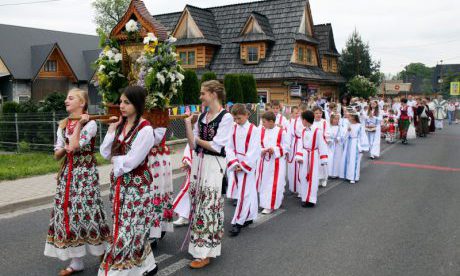This year is doubly important for the Catholic Church in Poland. In addition to hosting this year’s World Youth Day, Poland also celebrates the 1,050th anniversary of its Christian heritage in 2016.
Since 966, Poland has often been Antemurale Christianitatis, the bulwark of Christianity against invasion, and has time and again defended our civilization.
Now is the perfect opportunity to revisit the always dramatic, constantly inspiring, and often tragic history of the faith in this land that is the crossroads between East and West.
Europe is largely a manmade concept, and the border between Europe and Asia is more cultural than geographic. In the Middle Ages, becoming part of Europe involved accepting Christianity.
This happened in Poland when the nation’s Duke Mieszko I of the Piast dynasty was baptized in 966. As a result, the Holy Roman Emperor and other European rulers recognized Poland as a part of the European family.
In his book Memory and Identity, Pope St. John Paul II noted that while religious wars and persecutions raged across Europe, his native Poland was an oasis of tolerance. The Kingdom of Poland, which eventually came into a dynastic union with Lithuania and became the Polish-Lithuanian Commonwealth following the Union of Lublin in 1569, was a place to which persecuted religious groups flocked.
Two-thirds of the world’s Jews trace their ancestry to Poland; while in the rest of Europe Jews were walled in ghettoes or expelled, they were given privileges by the Polish kings. Numerous Armenian merchants settled in Poland, as did radical Protestant sects.
Following the Reformation, most Polish nobles (who constituted up to 10 percent of the nation’s population, the highest proportion anywhere in Europe) adopted Calvinism, although most reverted to Catholicism thanks to the efforts of the Jesuits.
In 1596, a group of Ukrainian Orthodox bishops in Poland entered into a union with Rome, forming the Ukrainian Greek Catholic Church, the largest Eastern rite church today. Overall, only about 40 percent of the Polish-Lithuanian Commonwealth’s population consisted of Roman Catholic Poles. Continue reading
Sources
- Article by Filip Mazurczak, assistant editor of the European Conservative and a correspondent for the National Catholic Register in The Catholic World Report.
- Image: Catholic Herald
News category: Features.




